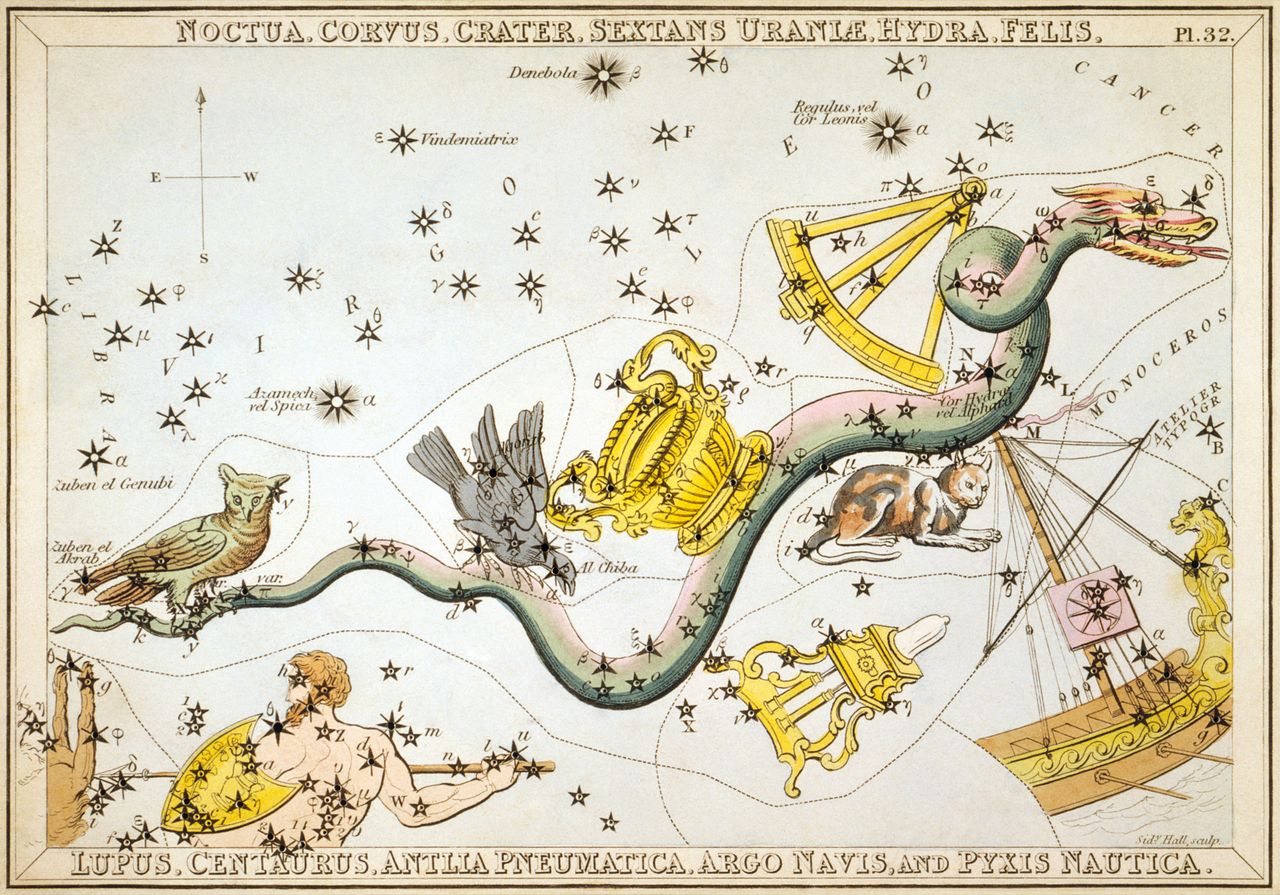The Figure of Atlas
Published:

–>

The first glance
This nearly two meter high Hellenistic sculpture depicts Atlas (Ατλας) or more commonly known, the Farnese Atlas. The monumental work was first discovered in Rome in 1575, and was then identified as the heavenly sphere-bearing Atlas, the Titan condemned to hold up the sky for eternity, is from Greek mythology. The name Farnese comes from Cardinal Alessandro Farnese who acquired the sculpture in the early 16th century, and found its home in the antiquities collection of the Farnese house. Today, it is located in Museo Nazionale in Naples.
On this archaic figure, Wikipedia page says:
Atlas labors under the weight because he had been sentenced by Zeus to hold up the sky. The globe shows a depiction of the night sky as seen from outside the outermost celestial sphere, with low reliefs depicting 41 (some sources say 42) of the 48 classical Greek constellations distinguished by Ptolemy, including; Aries the ram, Cygnus the swan and Hercules the hero. The Farnese Atlas is the oldest surviving pictorial record of Western constellations.
What got me really curious into the figure of the Atlas was its philosophical reading by the famous contemporary German philosopher Peter Sloterdijk. It appears in the volume Globen of the celebrated magnum opus Sphären trilogy. (First one is Bubbles and the last one is Foams). According to Sloterdijk, the Atlas should be understood as one of crucial moments in transition of the notion of globe from Greek world to the Roman world and hence it does play a significant role in developement of history of ideas of the globe to its final present culmination as the fundamental picture of the world.
Picture of the world is a Heideggerian term which connotes the world conceived and grasped as picture, rather than a picture of the world; it is a system that stands before subjects, in which all things belong to and all things stand together. We will encounter this concept later in fuller details, but for now certain references to the Ancient Greek elements of Atlas is in order.
The Orb
Sloterdijk argues that full-sphere shaped globe as opposed to a hemisphere indicates the deep impact of scientific thought and imperial concept over mythical pre-theoretical view of world one finds in old Homeric Uranus. He writes:
In the first place, the ball on his shoulders and between his hands is no longer the old Homeric or Hesiodic heaven whose bearer the Titan of the myth was ordered to be by Zeus as punishment for his participation in the insurgency of the earthly, old gods against the Olympians.In fact, the old Homeric Uranos can be represented not as a sphaira, but rather only as a hemisphere over the flat Earth … On the other hand, it is a testament to the triumph of the Greek enlightenment that the modern mathematical full sphere is loaded upon the archaic Titanic form. What Atlas bears on his shoulders is precisely the heaven of philosophers, synonymous with the world as a whole or the cosmos since Plato and Aristotle. … Thus what Titan bears upon his shoulders represents a poetic-scientific bastard heaven, a product of geometry as much as mythology.
Use of the word Sphaira in contrast with mathematically conceived sphere in the quote above signifies a common conceit of the pictorial language of power.
Argo
One of the obvious elements of the picture which strikes the eyes is the mythical Greek ship, Argo. It is held that Argo was planned or constructed by the help of Athena, and it was the first ship to sail the seas.
Wikipedia page tells us:
After her successful journey, Argo was consecrated to Poseidon in the Isthmus of Corinth. She was then translated into the sky and turned into the constellation Argo Navis.
Argo is depicted as half-ship on the globe on the shoulders of the Atlas since it emerges only half-way in the south of winter sky.
More on details of the picture, Sloterdijk writes:
The ship is flanked on the right by centaurs, above whom Hydra and Crater can be recognized; one the left, it is flanked by the figure of Canis Major. With each of these pictures, there is connected a micro-universe of tales, thanks to which the events of the world are inscribed amongst the images of scenic movement. If the sphaira as perfected figure readies the philosophical subduing of of beings in a single sublime silhouette, the inscription of the constellations bears the witness to the memory of primal dramas of life in their prototypical sequence. Aby Warburg has celebrated the constellated celestial globe as the true manifestation of Greek genius-as the human synthesis of mathematics and poetry.

The Age of the World Picture
As we said in the above, Sloterdijk regards the notion of globe in its final present culmination as the fundamental picture of the world. He goes so far as to say
Globalization or sphereopoiese in general is the fundamental event of European thought, one that has not ceased to provoke revolutions in the thought and life relations of humans for two and a half thousand years. What today appears as a blunt geopolitical fact in a phase of greater concentration (and more nervous interpretation), in the beginning was a compulsory figure of thought only for philosophers and cosmologists. Mathematical globalization proceeds terrestrial globalization by more than two thousand years.the starting date of the original globalization can be determined, at least as an epoch, with some clarity: it is the cosmological enlightenment of the Greek thinkers who, combining ontology with geometry, brought the great sphere into play. Perhaps Heidegger was right to equate modernity with the high point of the picturing of the world and beings, but the beginnings of this event reach back to the culminating thought of the Greeks.
Sloterdijk reference to Heiddeger is indeed Heidegger’s 1938 essay The Age of the World Picture
(part III in the book The Question Concerning Technology and Other Essays). In page 134, Heidegger writes
The fundamental event of the modern age is the conquest of the world as picture. The word
picture(Bild) now means the structured image (Gebild), that is the creature of man’s producing which represents and sets before.
The modern emergence of the world as picture coincides with the constitution of man as a subjectum: the center of all relation, the Cartesian cogito the only authority which grants being to life experience
(Erlebnis) and that explains and evaluates whatever is in its entirety, from the standpoint of man and in relation to man.
It is no wonder that humanism first arises where the world becomes picture. It would have been just as impossible for a humanism to have gained currency in the great age of the Greeks as it would have been impossible to have had anything like a world picture in that age. Humanism, therefore, in the more strict historiographical sense, is nothing but a moral-aesthetic anthropology. (page 133 of the same book.)
If one pays a closer attention into the movement of Sloterdijk’s thinking, his recognition of the notion of globe as the fundamental picture of the world seems to be contrary to what Heidegger is saying about premodern world. To Heidegger, the premodern being does not have a world picture. Where does Sloterdijk find this connection?

Leave a Comment